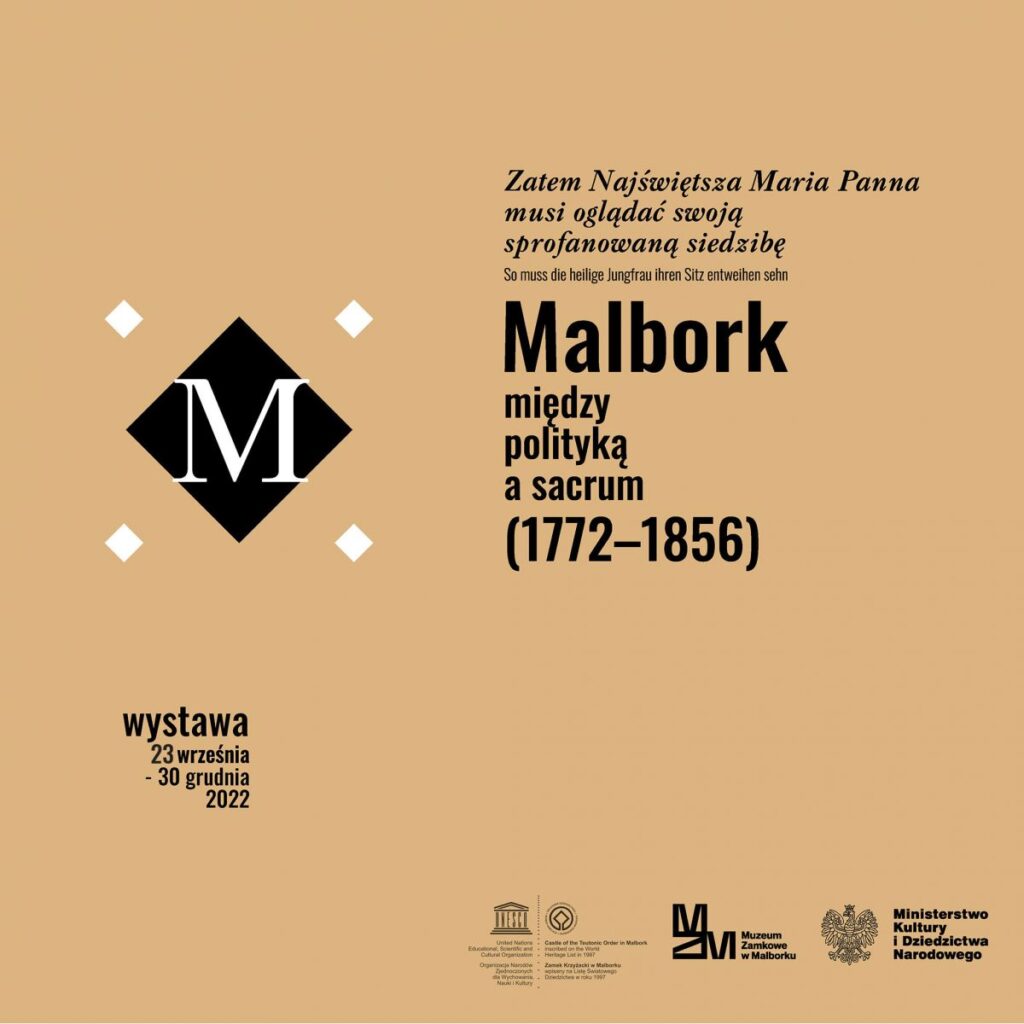News
THE HISTORY OF THE CASTLE IN MALBORK IS THE SUBJECT OF THE NEW EXHIBITION “THEREFORE THE BLESSED VIRGIN MUST WATCH HER CORRUPTED SEAT” MALBORK BETWEEN POLITICS AND SACRUM (1772-1856)

The Castle Museum in Malbork with branches in Kwidzyn and Sztum invites you to the exhibition “So the Blessed Virgin Mary must see her desecrated seat” – Malbork between politics and the sacred (1772-1856), which will be available to visitors from September 24, 2022.
-The castle in Malbork is one of the most important monuments in the world. In 1997, it was entered on the UNESCO list, which confirms its importance for all mankind. Since its inception, it has aroused interest and admiration, and for over 200 years systematic research and conservation work has been carried out here. This exhibition tells about the beginnings of this process, which continues to this day, in which scientific, conservation and also ideological arguments were used. Malbork is not an ideologically neutral object. It is inscribed in the complicated history of the lands of today’s northern Poland, it combines the history of pagan Prussian tribes, the Polish-Lithuanian Commonwealth, the Kingdom of Prussia and united Germany, and an inseparable element of its history (not only medieval) is the Teutonic Order and its legend of positive and negative colors. All these factors influenced the process of the castle’s functioning and its reconstruction in the 19th and 20th centuries. The presented exhibition is a story about the castle, with particular emphasis on the beginnings of its reconstruction in the first half of the nineteenth century. Janusz Trupinda, Director of the Castle Museum in Malbork
The exhibition will be a specific story about the contemporary image of the Malbork fortress, which has its roots in the turbulent history of the castle at the turn of the 17th and 19th centuries. The curator of the exhibition is Justyna Lijka from the Department of Art and Artistic Crafts of the Castle Museum in Malbork, who prepared the exhibition in co-operation with Dr. hab. Janusz Trupinda, dr hab. Christofer Herrmann, Bartłomiej Butryn, Artur Dobre and Bartosz Skop.
The exhibition will reveal the backstage of the loss of the original identity of the castle as a result of the utilitarian construction and adaptation works undertaken by the Prussian administration in the last quarter of the 18th and early 19th century, which were part of the general strategy of developing new provinces. They stripped the Teutonic Knights stronghold of the symbolic meanings and architectural attributes of the majesty and territorial power of the great masters, legible for centuries. They completely changed its image in the topography of the city and Żuławy Wiślane, making the castle a military unit subordinated to the central authority in Berlin.
-The stormy history of the castle and its historical significance have not been deleted from collective memory. They were still alive in historiography and travel literature. Remembered by the voice of antiquities, who saw in the works of the past an important element of identity, shaping social ties and a sense of Prussian patriotism, in the first decades of the nineteenth century, led to far-reaching changes in the approach of the Prussian authorities to the Malbork castle, which culminated in its first restoration inaugurated in August 1817 .- Justyna Lijka, exhibition curator comments.
The exhibition, organized with the support of the Ministry of Culture and National Heritage, will feature exhibits from the collection of the Castle Museum in Malbork with branches in Kwidzyn and Sztum, as well as those provided by the Princes Lubomirski Museum at the National Institute of Ossoliński in Wrocław, the Nicolaus Copernicus Museum in Frombork, the National Museum in Gdańsk, the National Museum in Kraków, the Royal Castle in Warsaw, the Elbląg Library, the Gdańsk Library of the Polish Academy of Sciences, the State Archives in Gdańsk, the State Archives in Malbork and German institutions: Akademie der Künste in Berlin , Staatliche Museen zu Berlin Preussischer Kulturbesitz: Kupferstichkabinett, Kunstbibliothek, Münzkabinett, Stiftung Preussische Schlösser und Gärten Berlin – Brandenburg in Potsdam: Aquarellsammlung, Gemäldesammlung, Karlsruhe Schleschen, Archiv Königliche Porzellan Manchen, Archiv Königliche Porzellan Manchen.
Tickets
Buy tickets online
Opening Hours
- Mon - Sun:9:00 - 16:00
Exhibitions
- Tue - Sun:9:00 - 15:00
Contact
Tourist Information
- +48 55 647 08 00
- +48 55 647 09 02
- +48 55 647 09 78